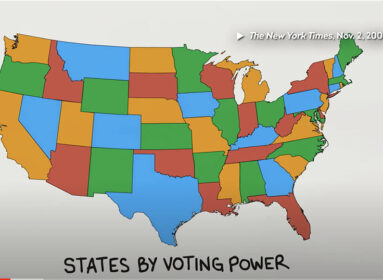“When I first told people I was doing a documentary about Jewish women in American sport, they all said, ‘Are there any?”
 There are many misconceptions about Jews, among them, that we are not a particularly athletic people. Despite phenomena like Jewish domination of the New York basketball scene in the ‘30s, the international Maccabiah Games held in Israel since 1932, and gold-medaled American-Jewish Olympians like Aly Raisman and Mark Spitz, the concept of the Jewish sportsperson is still one that hasn’t made a deep impression in the collective American psyche.
There are many misconceptions about Jews, among them, that we are not a particularly athletic people. Despite phenomena like Jewish domination of the New York basketball scene in the ‘30s, the international Maccabiah Games held in Israel since 1932, and gold-medaled American-Jewish Olympians like Aly Raisman and Mark Spitz, the concept of the Jewish sportsperson is still one that hasn’t made a deep impression in the collective American psyche.
The producers of the 2006 documentary “Jewish Women in American Sport: Settlement Houses to the Olympics” set out to set the record straight. “When I first told people I was doing a documentary about Jewish women in American sport, they all said, ‘Are there any?’” filmmaker Shuli Eshel told an interviewer a year after the film’s debut. “They kind of asked jokingly, but they weren’t kidding. We really had to convey that these women do exist and capture the historical legacy that they left.”
Dr. Linda Borish, professor of history and gender and women’s studies at Western Michigan University, researched and co-produced the film, sponsored by Maccabi USA/Sports for Israel. She will present and discuss the documentary later this month in a program sponsored by the Jewish Historical Society of Greater Hartford.
A New York City native, Borish spent part of her childhood in West Hartford with her family during the ‘60s. She holds a BA in American studies from Skidmore College and an MA and PhD in the field from University of Maryland, with particular interest in women’s history and the sports history. Borish has written and presented extensively on American women in sports and athletics. As a scholar and educator, she also focuses on how sports helped shape American Jewish women during the 20th century and how Jewish women helped shape American sports.
Since the film premiered at the Jewish Sports Hall of Fame in New York in October 2006, it has been screened at Jewish film festivals in North America, Europe, and Israel.
Borish spoke with the Ledger’s Cindy Mindell about how the project came about.
Q: How did you develop an interest in the subject of American Jewish women in sports?
A: My own training is in American women’s history and sports history. I had been asked to review a book on sport in the American Jewish experience for the American Jewish History Journal. The author wrote a lot about the importance of basketball for Jewish men and I knew that Jewish women had played; Senda Berenson, a Jewish immigrant from Lithuania, is considered the founder of women’s basketball. She not only learned the game from inventor James Naismith himself, but she modified the rules and held the first women’s collegiate basketball game in 1893. She was also the first woman inducted into the Basketball Hall of Fame. I knew about the importance of the YWCA for Christian women and I wondered, did Jewish women not participate in sports or have we just not researched their participation?
Q: And what did you find out?
A: I had done quite a bit of research on settlement houses for another of my publications, exploring the concept that these urban community centers had provided athletic opportunities for immigrant boys as part of their acculturation. I wanted to learn how gender and culture played a role in the types of sports and activities available to young women. There is research on American Jewish women in music, politics, labor activism, film, food, education, etc. – so why not in sport?
The settlement house movement started in 1820, but the most significant wave was from the beginning of the 20th century through 1920. Often, young Jewish immigrant women wanted to participate in sports but lacked facilities. Many of these women learned basketball in the Jewish settlement houses.
Beginning in the mid-1800s, the Young Men’s Hebrew Association [YMHA] began opening facilities to provide help for Jewish immigrants in several U.S. cities, and the first Young Women’s Hebrew Association [YWHA] opened as an annex to the YMHA in New York in 1888.
In 1917, the National Jewish Welfare Board became the governing body for the Jewish Ys, many of which later became Jewish Community Centers.
Q: What is the Connecticut component to your research and film?
A: Several years ago, while doing research in the Jewish Historical Society’s archives, I came across issues of the Connecticut Hebrew Record from the early part of last century, containing stories about the YWHA. The Hartford YWHA was founded in 1915 by a group of young Jewish women at the city’s YMHA. Under the leadership of executive secretary Marion Scharr, the YWHA developed a full range of programs, including an athletic department, even though the girls lacked proper facilities. They would use the Brown School gymnasium once a week to play basketball and by 1920 became good enough to play against the YWCA; in fact, the YMHA boasted that the girls would challenge any team in Connecticut.
In December of that year, basketball teams from the YWHAs of Hartford and New Haven – proudly representing the “State Capitol” and “City of Elms,” respectively – competed in a game widely publicized in the Connecticut Hebrew Record. Admission to the game was fifty cents, with all proceeds divided equally between the Jewish Home for Orphans in New Haven and the Hebrew Home for the Aged in Hartford. The Record reported that the audience was as large as that at a men’s basketball game. New Haven won the game, 11 to 2.
By 1921, the YWHA basketball team was practicing twice a week, still using Hartford-area school gyms. They played in the Hartford County Basketball League, led by team captain Dot Gilman. In 1930 and 1931, coached by Morris N. Cohen, the team won the State Championship. This prowess wasn’t restricted to women players: a lot of YMHA basketball teams were very competitive against college teams, YMCAs, and even semi-pro teams.
Like in other U.S. cities, companies in Hartford sponsored the Triple A [Amateur Athletic Association] Industrial Leagues in several sports – baseball, basketball, tennis, softball, golf – for their male and female employees. Women’s basketball teams were fielded by businesses including Travelers Insurance Company, Aetna Fire Insurance Company, and the New Departure Bell Company in Bristol.
In addition to basketball, Hartford YWHA members had access to other sports, including swimming at the YWCA pool, and soccer and tennis at public facilities like Keney Park in Hartford.
Q: Why is this topic important today?
A: Shuli and I wanted to challenge the misperceptions about Jewish immigrants to the U.S. in the early twentieth century, that they were sickly and unable to participate in athletics. We also wanted to challenge gender expectations for women in this country over the last century. There were virtually no college athletics in the U.S. until the 1950s, and it took another two decades to enact Title IX.
Change takes time to implement, like the Civil Rights movement. In this case, just because a law was passed didn’t mean that women and girls immediately had equal access to gyms; it took several years to begin to implement these programs. We’ve been quite pleased with the responses from a variety of organizations that have screened the film, acknowledging how Jewish women opened up sports for other minority groups.
Jewish Women in American Sport: Settlement Houses to the Olympics with Dr. Linda Borish appearances in the Hartford area:
Tuesday, April 30, 7 p.m. at the University of Hartford, Dana Hall, Mali 2 Auditorium; moderated by Prof. Avinoam Patt, Greenberg Center for Judaic Studies
Wednesday, May 1, 12:30 p.m. at Manchester Community College, Great Path Academy Building, GPA Community Commons, 2nd floor
Wednesday, May 1, 7:30 p.m. at The Emanuel Synagogue, 160 Mohegan Drive, West Hartford
For more information visit www.jhsgh.org
or call (860)727-6170
Comments? email cindym@jewishledger.com.








 Southern New England Jewish Ledger
Southern New England Jewish Ledger














